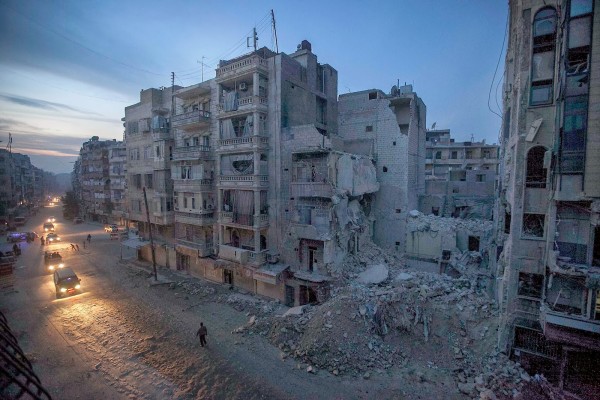When it comes to integrating corporate social responsibility (CSR) into business models, cosmetics still seem to matter more than actual impact. Even as consumers grow increasingly sensitive to CSR, claims are more important than real performance. By doing so, many companies are missing out on business opportunities. If businesses were to take more seriously the concept of creating shared value (CSV), they could create measurable social impact as well as business impact at the same time. Successful CSV creates healthy value chains, safe products, happy employees and local communities, and above all profits.
Doing Good Sells…
Corporate perspectives on CSR have changed from a necessary evil to a marketing opportunity. At the turn of the millennium, much in line with Friedman´s critique on corporate citizenship in the 1970s, commentators argued that business should focus on making profits and sticking to the law. CSR departments existed, but often only as reactions to appease activists; companies could not afford not to have them.
In 2015 companies still cannot afford not to do CSR, but rather than a necessary cost, businesses see CSR as a brand building opportunity. In a world where people define themselves through consumption, doing good is the ultimate brand strategy, whether it concerns being green, going fair trade, or supporting charity. Corporate citizenship, by many regarded as a synonym of CSR, has a future too; consumers from generation Y (21-34) are much more conscious as consumers than baby-boomers (46-65), and consumers in growing markets in the global south are substantially more sensitive to CSR and sustainability than their peers in the US and Europe.
… But doing better does not sell more
Unfortunately, it does not seem to matter much whether companies actually do good or whether they just claim to do so. Studies tend to measure consumers´ perceptions of CSR claims; not their actual impact. An increasing amount of businesses publishes annual reports on CSR performance, but there is no comprehensive framework that allows for true comparison. The notion that the creation of social value and the creation of corporate value can go hand in hand is one that has not received sufficient attention.
Experts on CSR recognise that one of the main obstacles for executives is the lack of data to prove the return on investment on activities. The prevailing approaches to CSR are too fragmented and disconnected from business and strategy to reach any real conclusions. As a result, giving to random (but well-known) charities is still a much favored strategy; it´s easy for consumers to identify with such causes. As long as consumers cannot objectively compare impact, the relation between CSR performance and sales-records is likely to stay inelastic.
Creating Shared Value – Having Your Cake and Eating it Too
Those that can truly deliver on CSR still have a lot of unconquered ground to win though; a 2013 report by the Reputation Institute showed that 73% percent of consumers across the 15 largest markets in the world are willing to recommend companies that are perceived to be delivering on Corporate Social Responsibility. The problem is that only 5% of companies are seen as actually delivering on their promises.
It is therefore strange that still relatively few businesses have integrated the concept of creating shared value. Introduced in 2006 by Michael Porter and Mark Kramer, the concept explains that if “corporations were to analyse their prospects for social responsibility using the same frameworks that guide their core business choices, they would discover that CSR can be much more than a cost, a constraint, or a charitable deed—it can be a source of opportunity, innovation, and competitive advantage.”
The essence of CSV lies in creating business value through the creation of social value. It means understanding the core needs and interests of not only consumers, but also those of employees, retailers, local communities, and society in general. Companies that understand their relationship with all of these actors truly understand the market, rather than just the consumer at the end of the chain. Motivated employees, capable retailers, and happy local communities make business more productive, more committed, and safer to shocks.
Unfortunately, many businesses continue to view value creation narrowly, optimising short-term financial performance in a bubble, while missing the most important customer needs and ignoring the broader influences that determine their longer-term success. The banking sector, for example, has long lost its boring but reputable status in society as an institution that caters the needs of households and businesses needing credit. The disconnection from society has hurt society as well as the banks themselves. Meanwhile, those banks that incorporate concepts such as impact investing are thriving. In the long run, those businesses that are able to create business value through creating social value survive. Those who make profits at the expense of society can do so temporarily, but in the end they are shooting themselves in the foot.
Examples show that CSV has many advantages; companies can create business value, marketing value, and social value all at the same time. For example, Coca-Cola´s Colectivo initiative in Brazil, in an ingenious attempt to improve the business performance of Coca-Cola retailers, connected retailers with unemployed business graduates who served as consultants. In doing so, the program increased the performance of its retailers, helped unemployed Brazilian graduates in getting their first job and work experience, and boosted brand connection all at the same time. CSV strategies have also helped companies like Intel, Nestlé, and Novo Nordisk in improving business performance and social performance at the same time. The results are seen in terms of higher quality products, more satisfied and better educated employees in developing countries, better safety standards, and happier customers.
Not unimportantly, the rate of return can often be predicted and monitored too. For a long time the traditional ´triple bottom line´, conjured up by CSR consultancies to promote a mix of economic, environmental, and social activities, did not convince executives very much. At the end of the day, shareholders and investors only look at one bottom line. Integrated CSV strategies actually help businesses turn their corporate citizenship into real business plans, including projections for cost-reduction, product quality, productivity, and more stable supply chains. Projects that proove to investors they have their cake, eat it too, and then still give a slice to society are by all means possible.





